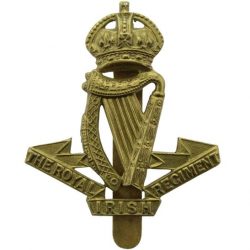Personal Details
Born: 23 May 1894 in Burleydam, Cheshire and baptised with his twin sister on 1 July 1894 at St Michael`s Parish Church, Burleydam.
Family: He was the third of five children born to Thomas Allen Hancock, a farm labourer and his wife Sarah. He married Sarah Jane Griffiths in 1927 in Chester, Cheshire. They had one child, Alan W.
Residence: From the time of his baptism in 1894 until at least 1901 his family were living at 2 Park Cottages, Dodds Green, Cheshire. By 1911 he was a boarder at Thornley Longridge, Chipping, Preston, Lancashire. He gave an address of Combermere Cottage, Burleydam on his enlistment in 1915, this was still his address in 1919. During this time he listed another address: 26 Victoria Road, Gorton, Manchester. By 1939 and married his home was Stone Lodge, Combermere, Burleydam, Cheshire.
Employment: In 1911 he was a groom and in 1915 a labourer. By 1939 his occupation was a gardener.
Died:In 1977 in North Shropshire, aged 82.
Military Details
Regiment: Royal Irish Regiment (previously Suffolk Regiment, Cheshire Regiment and King`s Shropshire Light Infantry)
Rank: Private
Service Number: 3798 (previously 49457, 65433 and 23154)
Date of Enlistment: 7 December 1915
Date of Discharge: 29 September 1919
Reason for Discharge: Demobilisation
Trevor was awarded the Campaign Medals (British War medal and Victory medal)

The British War Medal (also known as 'Squeak') was a silver or bronze medal awarded to officers and men of the British and Imperial Forces who either entered a theatre of war or entered service overseas between 5th August 1914 and 11th November 1918 inclusive. This was later extended to services in Russia, Siberia and some other areas in 1919 and 1920. Approximately 6.5 million British War Medals were issued. Approximately 6.4 million of these were the silver versions of this medal. Around 110,000 of a bronze version were issued mainly to Chinese, Maltese and Indian Labour Corps. The front (obv or obverse) of the medal depicts the head of George V. The recipient's service number, rank, name and unit was impressed on the rim.
The Allied Victory Medal (also known as 'Wilfred') was issued by each of the allies. It was decided that each of the allies should each issue their own bronze victory medal with a similar design, similar equivalent wording and identical ribbon. The British medal was designed by W. McMillan. The front depicts a winged classical figure representing victory. Approximately 5.7 million victory medals were issued. Interestingly, eligibility for this medal was more restrictive and not everyone who received the British War Medal ('Squeak') also received the Victory Medal ('Wilfred'). However, in general, all recipients of 'Wilfred' also received 'Squeak' and all recipients of The 1914 Star or The 1914/1915 Star (also known as 'Pip') also received both 'Squeak' and 'Wilfred'. The recipient's service number, rank, name and unit was impressed on the rim.

